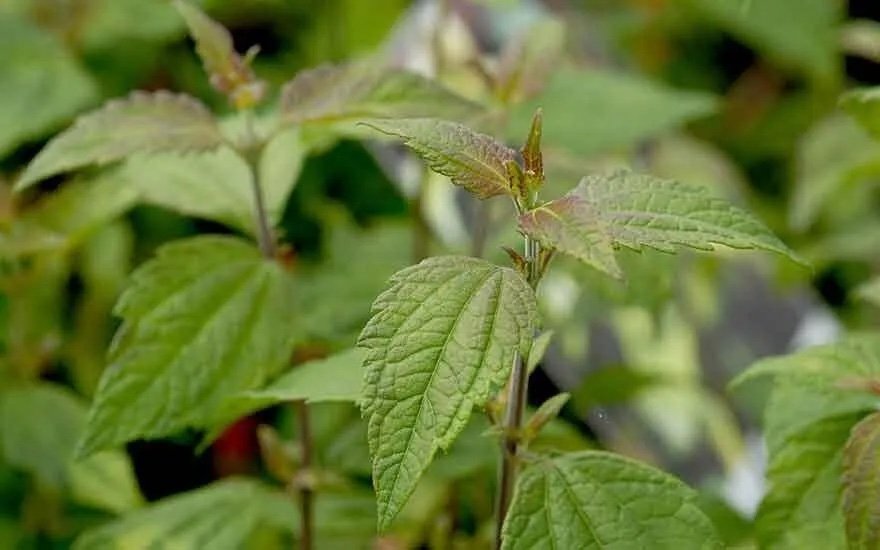Seven Different Plant Medicines You May Have Never Heard of
Plant medicines like ayahuasca and iboga are making the news in the past few years for their remarkable stories of transformation and assistance with addiction, trauma, etc. Similarly, Ketamine and MDMA are being researched and increasingly utilized for their therapeutic potential in treating conditions such as severe depression, PTSD, and other mental health disorders. Psilocybin therapy is emerging as a powerful tool in the fight against depression, offering profound insights and emotional healing, often described as 'resetting' the brain's patterns of negative thought.
When we started Evolve + Ascend back in 2013, it felt like the very early days of the psychedelic renaissance, and now, over a decade later, we are witnessing the ripple effect hit the mainstream in unprecedented ways. This surge in interest and acceptance can be partly attributed to influential works such as Michael Pollan’s — very accessible — "How to Change Your Mind," which explores the renaissance of psychedelic science and its profound impact on mental health and consciousness. Additionally, DoubleBlind Magazine’s groundbreaking journalism has been at the forefront, covering the multifaceted world of psychedelics, from therapeutic uses to cultural implications, further fueling the public’s curiosity and understanding of these substances.
The utility of these ancient technologies has the potential to change the world and the way we perceive it in beautiful and expansive ways. However, as Uncle Ben said in Spider-Man, "with great power, comes great responsibility." This wisdom rings true for the use of psychedelic substances as well; they are not without their risks and must be approached with respect, proper guidance, and caution.
Seven Different Plant Medicines You May Have Never Heard of
In this blog, we will delve deeper into the world of less-known plant medicines, exploring their histories, uses, and therapeutic potential. This exploration into other medicines barely scratches the surface of a complex and multifaceted cornucopia of medicinal plants. This exploration is a testament to the rich yet complex relationship humanity has with the natural world, offering a path to healing that is both ancient and newly contextualized in our modern era.
It is crucial to mention that the use of these substances should be approached with caution. This discussion is purely educational and not an endorsement to engage in illegal activities or self-medication. The substances mentioned can have powerful effects on the mind and body, and their use should be under the guidance of professionals in a legal and controlled setting.
Blue Lotus
The Blue Lotus (Nymphaea caerulea), also known as the Egyptian lotus or the sacred blue lily, is a water lily known for its sedative and mild psychoactive properties. Historically revered by the ancient Egyptians for its ability to enhance the mood, promote euphoria, and increase the feelings of connectivity with the divine, it contains aporphine and nuciferine, compounds thought to act as dopamine and serotonin receptor blockers. Consumed as tea, smoked, or soaked in wine, the Blue Lotus induces a state of relaxed inhibition and mystical euphoria, making it a popular adjunct to spiritual and social ceremonies throughout history.
Calea Zacatechichi
Calea Zacatechichi, also known as the dream herb, is a plant native to Mexico and Central America, traditionally used by the Chontal people of Oaxaca to induce vivid, lucid dreams. It is believed to enhance the clarity and recall of dreams, thus enabling "dream walking" — a practice used for divination and seeking guidance from the spirit world. The active compounds in Calea Zacatechichi are not fully understood, but they are thought to contain sesquiterpenes, which may be responsible for their dream-inducing effects. Consumed as tea or smoked before sleep, the herb is said to facilitate entry into a deeper spiritual consciousness and enhance introspective insights.
Datura
Datura, belonging to the family Solanaceae, is a genus of nine species of poisonous vespertine flowering plants known for their distinctive trumpet-shaped flowers. Widely recognized for its potent psychoactive properties, Datura contains tropane alkaloids such as scopolamine, hyoscyamine, and atropine. These compounds are known to induce delirium, hallucinations, and altered states of consciousness when ingested. Historically, Datura has been used in traditional medicines and spiritual rituals. Still, due to its high toxicity and the difficulty in controlling its effects, its use is fraught with danger and often leads to severe physical and psychological reactions.
Mandrake
Mandrake (Mandragora officinarum) is a plant of the nightshade family, bearing a root that often resembles the human form. It has been associated with various mystical and magical beliefs throughout history. The root contains hyoscine (scopolamine), hyoscyamine, and mandragorine, which are tropane alkaloids known for their hallucinogenic and anticholinergic properties. These compounds can induce a dream-like state but can also lead to hallucinations, delirium, and, in extreme cases, coma or death. Mandrake has been used in traditional medicine as an anesthetic and a sleep aid, as well as in magical rites and rituals for its supposed supernatural properties.
Ololiuqui
Ololiuqui (Turbina corymbosa), also known as the Christmas vine, is a species of morning glory indigenous to Latin America, from Mexico to northern South America. It holds a sacred place in Native American rituals, particularly among the Aztecs, who valued its seeds for their psychoactive properties. These seeds contain lysergic acid amide (LSA), a natural compound that is a precursor to LSD, offering a milder psychedelic experience. The Aztecs and other indigenous groups used Ololiuqui seeds to facilitate communication with the divine, seeking visions and spiritual guidance. When ingested, the seeds can induce altered states of consciousness, visual and auditory hallucinations, and a profound sense of introspection, although they may also cause nausea. Consumed primarily in ritualistic contexts, Ololiuqui was highly regarded for its ability to bridge the human and the divine, playing a crucial role in the spiritual and medicinal practices of indigenous cultures.
Rapé
Rapé (pronounced 'ha-peh') is a traditional Amazonian snuff prepared from finely ground plants, often including the leaves of the Nicotiana rustica, a variety of tobacco with significantly higher nicotine content than common tobacco (Nicotiana tabacum). The composition of Rapé can vary widely, incorporating other medicinal herbs to confer different healing properties and effects. Traditionally used by indigenous tribes of the Amazon basin, Rapé is administered through the nostrils using a pipe made from bamboo or bone, known as a 'kuripe' (for self-administration) or 'tepi' (for administration by another person). Its effects include heightened awareness, clarity of the mind, and cleansing of the body and spirit. It is considered to detoxify physically and spiritually and is used in various ceremonial and ritualistic contexts.
Yopo
Yopo is a hallucinogenic snuff prepared from the seeds of Anadenanthera peregrina, a tree native to the Caribbean and South America. The seeds are rich in bufotenin, N,N-dimethyltryptamine (DMT), and 5-MeO-DMT, three powerful psychoactive compounds. Traditionally, the seeds are roasted, ground into a fine powder, and mixed with a calcined shell or lime to create the snuff. When insufflated, Yopo induces intense visual hallucinations, profound changes in visual perception, and an altered state of consciousness, often described as transformative or spiritual in nature. The use of Yopo as an entheogenic substance dates back thousands of years in indigenous ceremonies and rituals.
Conclusion
In conclusion, while the exploration of plant medicines and psychedelics opens up a world of profound healing and transformative potential, it is accompanied by significant responsibilities. It is crucial to approach these substances with deep reverence, caution, and an educated understanding of their power. These are not merely tools for recreation but are sacred medicines that have been used for centuries within various cultural and spiritual traditions. Misuse or casual approach can lead to adverse psychological and physical effects, underscoring the importance of education, proper setting, and guidance.
For those who are called to explore these ancient pathways to healing and consciousness expansion, there are numerous educational resources available that provide valuable information, guidance, and support. Websites like Chacruna offer in-depth articles, research findings, and personal narratives that can help individuals navigate their experiences with psychedelics responsibly.
Integration, the process of incorporating the insights and shifts in consciousness from psychedelic experiences into daily life, is paramount. It is the key to translating profound moments of realization into lasting change.
As we approach a new era in psychedelic research and therapeutic use, it's our collective responsibility to approach these substances with care and responsibility. To explore the potential of plant medicines and psychedelics, one must educate oneself, seek guidance from experienced practitioners, and engage in thoughtful integration work. In doing so, we honor the traditions from which these practices originated and ensure a safe, respectful, and beneficial evolution towards a more unified and interconnected world.








